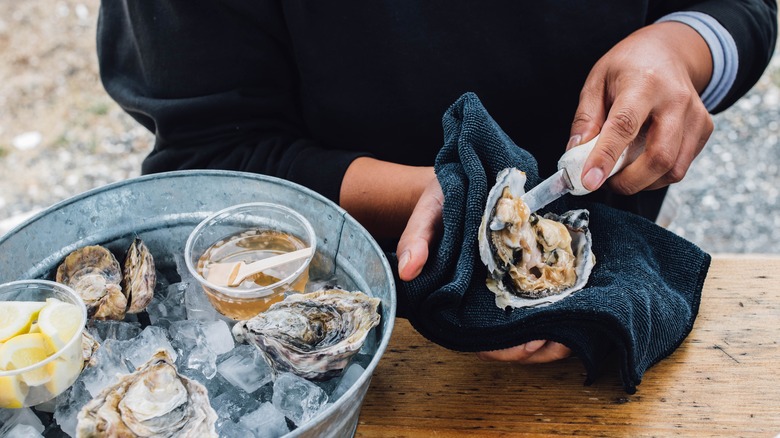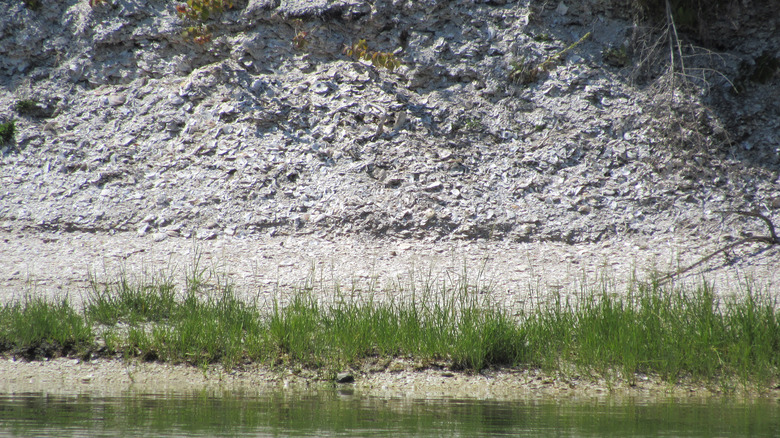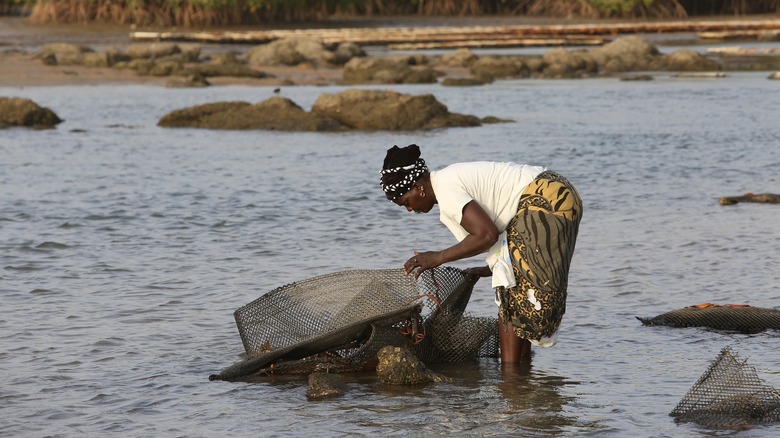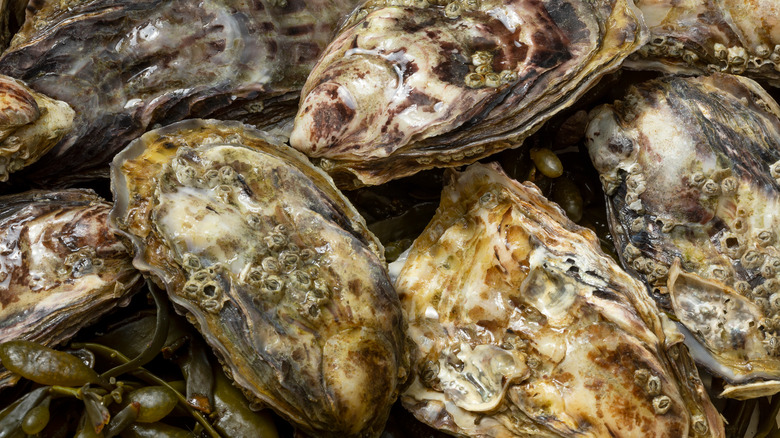Research Shares Importance Of Studying Indigenous Oyster Farming History
Everything most of us know about oysters has likely come about because of our love of consuming them. We know that they taste good raw, roasted, or grilled; that they can be enjoyed with a squeeze of lemon and a dash of hot sauce; that they can be roasted with various toppings or served either with a plain or flavored butter; and that much as we love them, we need to handle and store oysters a certain way to keep ourselves from getting food poisoning, per Cooks Illustrated. We also know that we generally consume five species of oysters commonly found in North America: eastern, Pacific, European flat or Belon, Kumamoto, and Olympia, per Chef's Resource.
But what we perhaps didn't know, is that 85% of the world's wild oyster reefs were wiped out in the last 150 years alone, with Europe having lost nearly all of its naturally occurring oyster beds, and that only a handful of reefs remain in South America, per The Conversation. Today, other than the oyster breeds that are farmed for consumption, other types of oysters like the Ostrea eduli, once found in Germany's Wadden Sea, have gone extinct altogether, per BMC. To combat this loss, researchers looked at traditional ways of cultivating and harvesting the bivalve in the hopes of restoring populations to their former, natural glory.
Oysters have been consumed for thousands of years
They needn't look far, since the stories told by the indigenous peoples of Australia and America about oyster cultivation track one another. Per the Smithsonian, the study shows that traditional oyster fisheries were managed on what is described as a "massive" scale spanning hundreds, if not thousands of years of use. These findings, which were published in Nature Communications, show that while the indigenous oyster colonies were regularly used and their supplies consumed, the oyster populations found within these colonies did not crash and disappear until European colonizers began reaching these shores about 500 years ago.
To provide some context into just how common oyster consumption was in certain parts of North America, scientists found the remains of 18.6 billion oysters in Mound Key off Florida's Gulf Coast in a shell midden — or a repository where oyster shells can be found in huge piles where they were discarded by ancient communities.
Indigenous peoples knew how to cultivate and use oyster beds sustainably
Indigenous peoples might have consumed oysters for centuries, but as the study's co-author Bonnie Newsom, an anthropologist at the University of Maine points out to Smithsonian, "Oyster harvesting didn't start 500 years ago with the arrival of Europeans. Indigenous peoples had a relationship with and understood this species well enough to use it as part of their subsistence and cultural practices."
Over in Australia, Lorraine Woolley, whose family has been taking care of oyster beds since before the colonizers arrived in 1870 says the native bivalve population was impacted by disease and over-exploitation by the colonizers, per ABC. As Wolley points out, "[Oyster beds] are like vegetable gardens. You've got to replant a vegetable garden, and they just kept taking them out."
The loss is especially tragic because an oyster is more than the sum of its parts. Aquaculture specialist Tessa Getchis tells Pew that shellfish on the whole serve two functions: "They improve water quality through filter-feeding and because they are 'living shorelines,' they provide natural erosion control as opposed to hardened structures like seawalls and jetties." For these reasons alone, studying the ways indigenous peoples raised and cultivated oysters is critical to keeping this marine resource healthy and thriving.
Indigenous peoples were ahead of their time
With so much of the world's oyster population depleted by overuse, Monash University professor of Indigenous Archaeology Ian McNiven told ABC, "In the past, a lot of people have thought that, 'it is nice to include Indigenous people but given that their levels of resource extraction [were] so low, of course, it was sustainable, and it's not really helpful for the modern age.' But what we are saying is when you look at the archaeology, some of the levels of First Nations oyster exploitation [were] unbelievably extensive."
University of Sydney Marine biologist Mitchell Gibbs further elaborated on why the indigenous way of harvesting oysters should serve as a model of how we do things today: "I want more recognition of the Indigenous practices that were used all around Australia for thousands of years," he said. "Indigenous people used techniques that promoted revitalization. It was about propagating. They'd apply that to oysters, native grasses, yams. Lots of different things. There are places where families have been working with oysters and incorporating Indigenous understanding for generations. They are experts at what they do, and I want to be a conduit so they can share their knowledge more widely."



